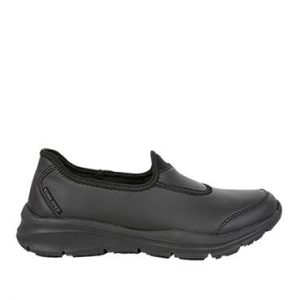Slip resistant shoes for construction and industrial use have gained a good deal of popularity in recent years. They are worn by a wide variety of professionals in all industries who must perform their jobs daily. However, some people wear them out on the street as well. If you are planning to buy one, you will find that there are a number of factors you need to consider. Let’s take a look at a few things that make slip-resistant shoes different from regular ones. Click here to check for affordable prices.

First, the materials that slip resistant shoes are made from will determine the type of traction that they offer on slippery surfaces. In general, flexible rubber soles with fair to good traction provide the best slip resistant shoes in terms of wet and dry surfaces like tile, concrete and flooring, which are popular in many indoor industrial and commercial environments. These shoes are normally designed to provide a good amount of grip, even on slippery surfaces. However, they tend to break down more easily when they contact high temperatures or are stepped on. Such shoes also tend to be stiffer than the others, especially in the area around the toe, which makes them less comfortable.
Secondly, safety shoe manufacturers and other shoe companies are producing specialized slip resistant shoes to cater to the needs of construction workers. They are also designed to be used in high traffic areas where regular shoes may not be allowed. Such types of safety shoes can provide greater traction and are not as stiff as non-slip shoes. Click here to check for affordable prices.
Thirdly, the design of slip resistant shoes will depend on the type of sole it has. Some have reinforced rubber soles, whereas others are made with carbon fibre or spring steel. In general, the stronger the soul, the higher the level of traction and, therefore, the more secure it is in walking on a wet surface or a slippery floor.
The fourth factor to consider when purchasing slip resistant shoes is the level of the arch support that it provides. Most of them have uppers that are narrow at the toe, which will result in a narrower gap between the toes and the sides of the shoe. This is achieved by using wider rubber soles or use of air cells in between the plates. As a result, it reduces the effect of twisting and bumps on the sole. It is also important for the toe box to be deep enough to prevent any slipping.
Fifthly, you should choose slip resistant shoes that offer added protection to your feet. One example is spiked heels. Although this can increase traction on slippery surfaces, it may cause more injury if used when walking over puddles and water. Another option is to get spiked inserts on the soles of your shoes. You may also want to consider a midsole with a pad made of plastic which provides extra protection for your foot and ankle. Click here to check for affordable prices.